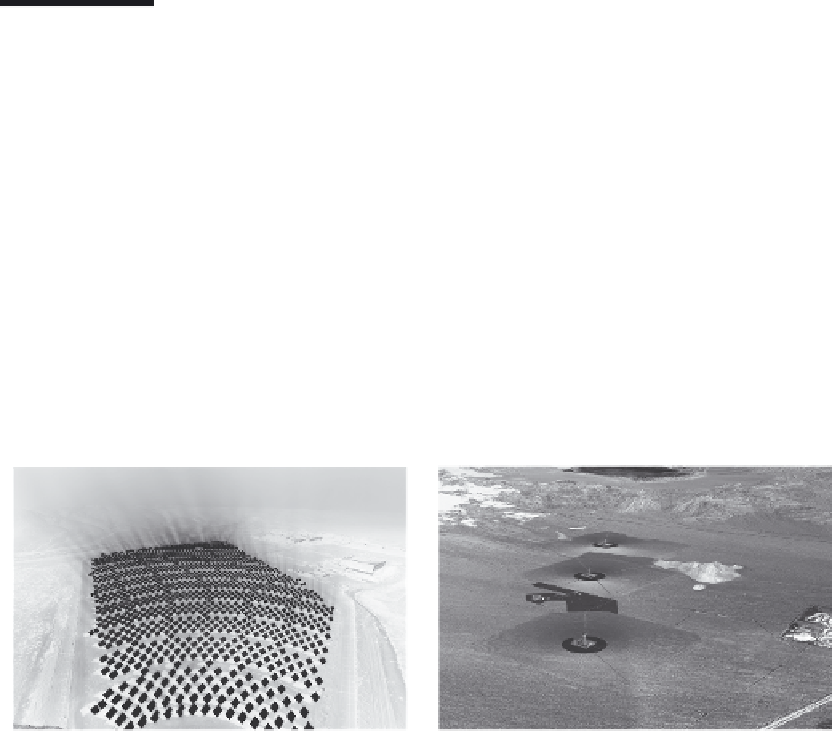Environmental Engineering Reference
In-Depth Information
Both mining and agribusiness rely heavily on “removable” water, especially in the desert,
bringing the discussion full circle to Roan Creek. In Yuma's case, the fields thrived while
the river was dying, its floodplain choked with monocultures of salt cedar and invasive
reeds.* The dead river decreased the quality of life both for the city of Yuma, and for
the Quechan tribe whose lands occupy the opposite bank. Recently wetland restoration
†
has become a shared vision for the region—one of an increasing number of initiatives to
reverse local impacts of exportive economics.
16.9 Exporting the Sky for “Green” Energy
Even “sustainable” and “alternative” resources can suffer when they are seen as export-
ready and removable. The current push for wind and solar “farms” is a case in point, and
one that specifically targets deserts as remote sources of these resources—which are seen
as removable (Figure 16.8).
Small-scale wind and solar electricity have honorable pedigrees in the environmental
self-sufficiency movement. Recent interest, however, has focused on “grid-tied” systems.
A 2009 clean-energy conference
‡
that included Al Gore envisioned expanding the grid to
“bring wind and solar energy from remote locations to the nation's cities.” Exporting sun
and wind from centralized large-scale production plants in the hinterlands “is essential to
all that we do to promote renewable fuels,” in the words of House Speaker Nancy Pelosi.
Further, the participants argued that the transmission grid is so critical that states should
be
excluded
from deciding where high-power lines are placed. This issue will directly affect
the future of desert states, whose year-round intense sunshine and frequent strong winds
are seen as surplus commodities to be relocated from these remote and “undeveloped”
(a)
(b)
FIGURE 16.8
Large-scale solar plants cover vast areas with mirrors (a) which concentrate intense reflected heat on
towers (b). Risks of local atmospheric heating or wildlife incineration are seldom discussed. (Courtesy of
brightsourceenergy.com; photo 105 Bright Source Energy.).
*
Tamarisk
,
Arundo
, and
Phragmites
species.
†
Information on these restoration projects is from personal interviews, April 2009, with lead restorationist Fred
Phillips and other project participants.
17
‡
Information on this conference from wire services article by Hebert.
18


Search WWH ::

Custom Search